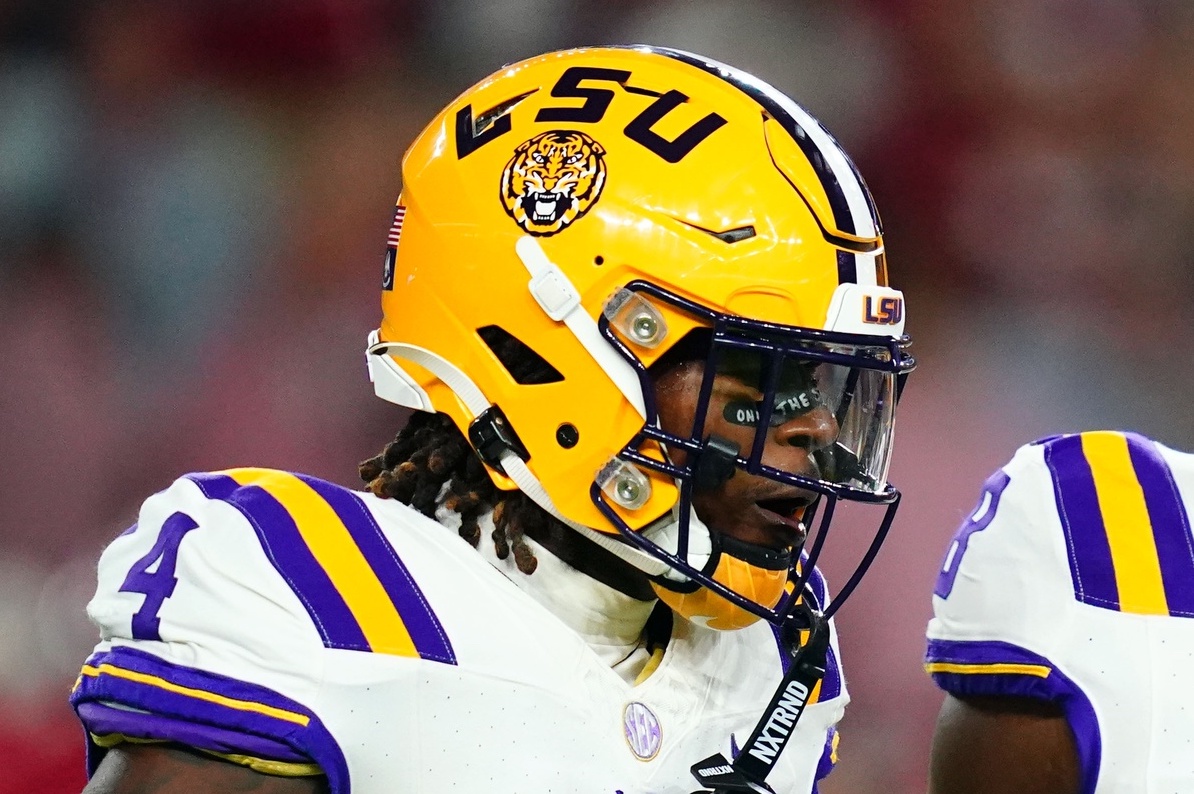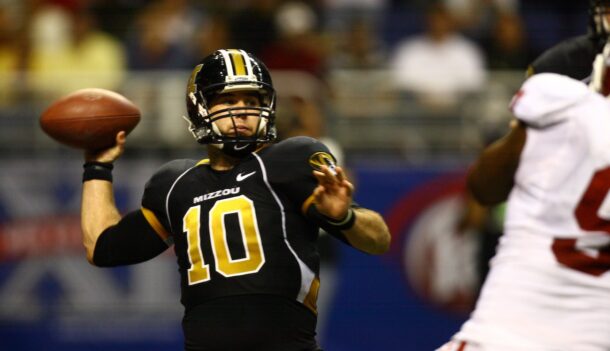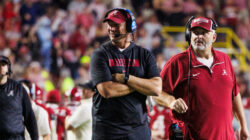
O’Gara: Why you shouldn’t overreact to Harold Perkins staying at inside linebacker
You rarely see a headline regarding a player staying at the same position.
Imagine if we did that for everyone in college football. You’d read a headline like “Carson Beck is staying at quarterback” or “Bru McCoy to continue to play receiver” and scratch your head. In the same way that your spouse would look at you if you woke up and announced that you planned to have dinner that night, you’d wonder why that’s news.
But with Harold Perkins, staying at inside linebacker was indeed news.
Harold Perkins is going to play inside linebacker again.
In an interview with @theadvocatebr today, Brian Kelly explained the plan for the LSU star.
“He needs to be more involved in the linebacker fits inside… It’s going to make us a better defense.”https://t.co/XsHJ88w7NX
— Wilson Alexander (@whalexander_) February 26, 2024
For some, that was met with an eye roll.
Actually, let me correct myself after reading some of the replies and quote-tweets of that Wilson Alexander tweet.
For many*, that was met with an eye roll.
Perkins’ usage and subsequent Year 2 regression as a game-wrecker was a constant topic of discussion in Baton Rouge throughout 2023. The preseason decision to move him to an off-ball linebacker spot after setting the conference ablaze as a true freshman was dissected, dissected some more and then dissected again. It wasn’t the only reason that Brian Kelly decided to gut his entire defensive staff at season’s end, but there’s no denying that Perkins’ misusage played a significant role in the decision to fire Matt House and poach blitz-happy Mizzou DC Blake Baker.
What I’m about to say might also be met with a collective eye roll, but hear me out — don’t overreact to where Perkins lines up.
That’s not what’s going to determine how Perkins performs in his pre-Draft season, and it won’t determine whether the most dangerous defensive player in the sport leads LSU to a Playoff berth. What Baker does with Perkins post-snap is far more important.
In 2023, it wasn’t Perkins’ pre-snap positioning that was maddening. That, I’d argue, wasn’t really a negative. If the plan was to try and confuse the offense based on where Perkins was lining up, I’d argue that House did that successfully. Look at how even Perkins’ final snap distribution was (via PFF):
- D-Line: 271 snaps
- Slot CB: 255 snaps
- Box: 244 snaps
- Wide CB: 2
If Baker replicates that with Perkins, I won’t have an issue. But if Baker replicates what House did with Perkins’ post-snap, I’m not rolling my eyes; I’m ripping out my hair and shouting loud noises at my TV, just as LSU fans did all fall.
Here was how the post-snap distribution broke down for Perkins in 2023:
- Run defense: 320 snaps
- Coverage: 291 snaps
- Pass rush: 162 snaps
There’s no world in which a player like Perkins should have nearly a 2-to-1 ratio of coverage snaps to pass-rush snaps. Period.
Yes, Perkins rushed the passer a ton by “inside linebacker” standards — he was 5th among FBS inside linebackers in pass-rush snaps — but that’s never going to the box he fits in. Not at 220 pounds. Letting him pin his ears back just 12 times per game was an insult to pass-rushers everywhere.
And to be clear, Perkins did progress significantly in coverage. Take it for what it is, but PFF had him graded out better in coverage (81.1) than as a pass-rusher (72.8).
The problem is that transition didn’t make LSU a better defense. It held the Tigers back in key spots.
Take that season-opening game vs. Florida State, for example. I was there that night, attempting not to shout things in the press box because when LSU was on defense, all I watched was Perkins. That probably wasn’t good for my blood pressure, which only climbed after I saw the final snap count breakdown for the night:
- 58 total defensive snaps (41.8 PFF grade)
- 28 snaps in coverage (44.9 PFF grade)
- 23 snaps as a run defender (44.5 PFF grade)
- 7 snaps as a pass-rusher (73.8 PFF grade)
Woof. It was bad. Kelly knew it was bad.
“You’re catching a young player early in his career and he’s going through some growing pains,” he said afterward.
Eeeeek.
It got better at times — he still had 13 tackles for loss and 5.5 sacks on the season — but Perkins never had meaningful games that he dominated as we saw in 2022 when he went into Arkansas and took over the entire state with his 4-sack performance while battling the flu. LSU’s ideal 2023 world didn’t consist of Perkins totaling 2.5 sacks vs. bowl-eligible teams. It consisted of him still making those splash plays while operating more like a modern inside linebacker.
If you’re a confirmed eye-roller and the non-position switch of Perkins caused you great distress on Monday, you probably also connected some other dots. LSU’s biggest question mark on the entire roster is on the defensive line. Yes, poaching Bo Davis from Texas for a return to Baton Rouge will help. The issue is that in the immediate future, Perkins being put in tough spots because of a defensive line that struggles to shed blocks could be an issue.
But again, that’s more about what’s happening post-snap. If Baker came to LSU as the highest-paid assistant in America ($2.5 million annually) to overhaul the most disappointing unit in America (No. 109 in FBS in yards/play allowed) just to have Perkins become a ho-hum run-stuffer, he’ll be remembered in Baton Rouge like Bo Pelini. Like, 2020 Pelini, not 2007 Pelini.
Baker was hired because of his aggressive style, which should bode well for Perkins. It doesn’t mean Perkins will warrant Micah Parsons or Bobby Boucher comparisons (please tell me I don’t need to explain “The Waterboy” reference). It does mean he should put his best player in spots to be more aggressive. A game with Playoff implications cannot end with Perkins getting 7 opportunities to rush the passer.
LSU should have plenty of games with Playoff implications, especially as the field expands to 12. There’s margin for error like never before. There’s not, however, margin for error when it comes to Perkins’ usage. Two years in a row of mismanaging LSU’s heat-seeking missile would hang over Kelly.
I’m optimistic that won’t happen, even after Monday’s news. But if it’s the same song, new verse for Perkins?
I won’t be able to prevent myself from shouting loud noises with the LSU faithful.
Connor O'Gara is the senior national columnist for Saturday Down South. He's a member of the Football Writers Association of America. After spending his entire life living in B1G country, he moved to the South in 2015.







